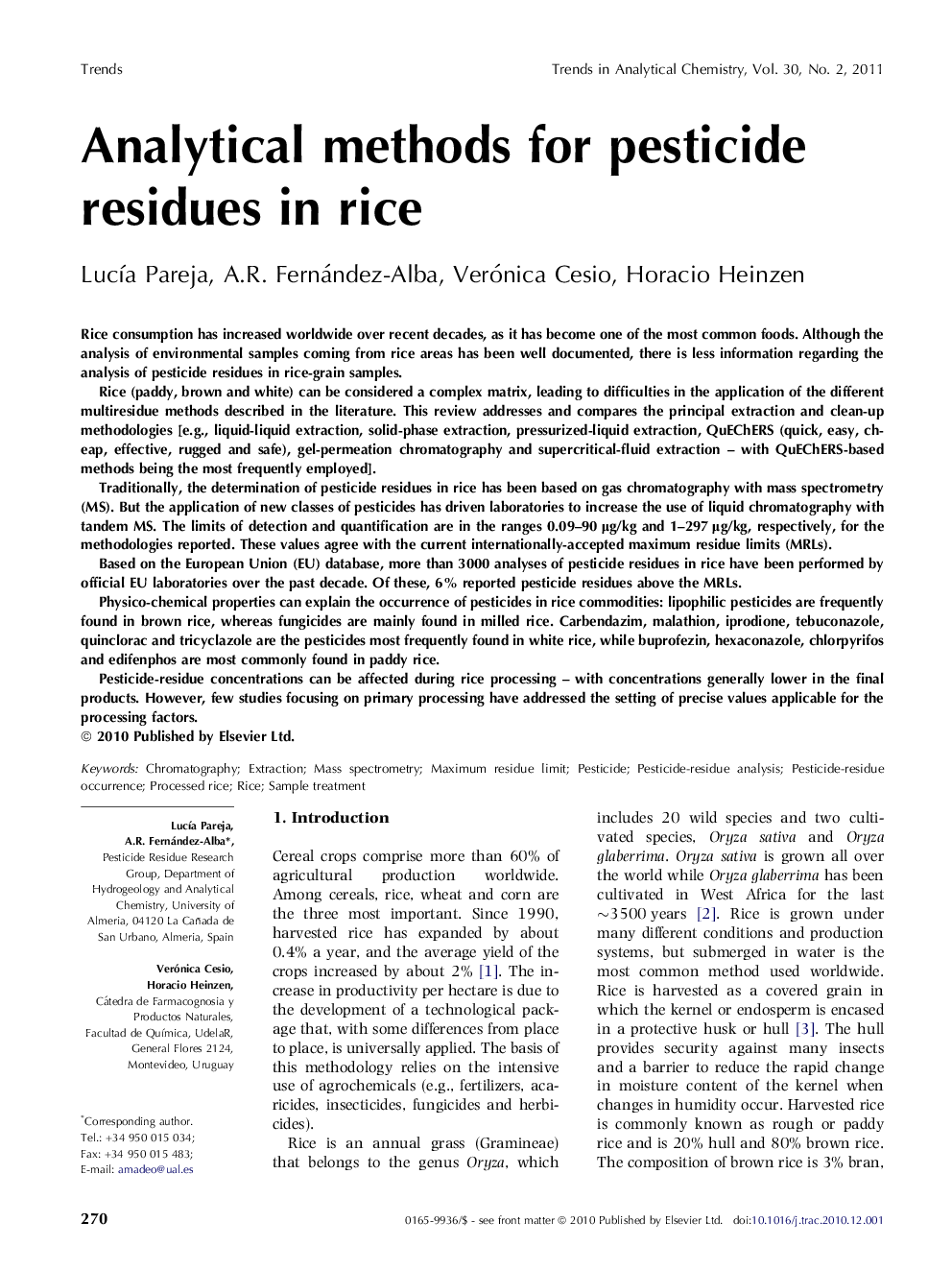| Article ID | Journal | Published Year | Pages | File Type |
|---|---|---|---|---|
| 1248651 | TrAC Trends in Analytical Chemistry | 2011 | 22 Pages |
Rice consumption has increased worldwide over recent decades, as it has become one of the most common foods. Although the analysis of environmental samples coming from rice areas has been well documented, there is less information regarding the analysis of pesticide residues in rice-grain samples.Rice (paddy, brown and white) can be considered a complex matrix, leading to difficulties in the application of the different multiresidue methods described in the literature. This review addresses and compares the principal extraction and clean-up methodologies [e.g., liquid-liquid extraction, solid-phase extraction, pressurized-liquid extraction, QuEChERS (quick, easy, cheap, effective, rugged and safe), gel-permeation chromatography and supercritical-fluid extraction – with QuEChERS-based methods being the most frequently employed].Traditionally, the determination of pesticide residues in rice has been based on gas chromatography with mass spectrometry (MS). But the application of new classes of pesticides has driven laboratories to increase the use of liquid chromatography with tandem MS. The limits of detection and quantification are in the ranges 0.09–90 μg/kg and 1–297 μg/kg, respectively, for the methodologies reported. These values agree with the current internationally-accepted maximum residue limits (MRLs).Based on the European Union (EU) database, more than 3000 analyses of pesticide residues in rice have been performed by official EU laboratories over the past decade. Of these, 6% reported pesticide residues above the MRLs.Physico-chemical properties can explain the occurrence of pesticides in rice commodities: lipophilic pesticides are frequently found in brown rice, whereas fungicides are mainly found in milled rice. Carbendazim, malathion, iprodione, tebuconazole, quinclorac and tricyclazole are the pesticides most frequently found in white rice, while buprofezin, hexaconazole, chlorpyrifos and edifenphos are most commonly found in paddy rice.Pesticide-residue concentrations can be affected during rice processing – with concentrations generally lower in the final products. However, few studies focusing on primary processing have addressed the setting of precise values applicable for the processing factors.
